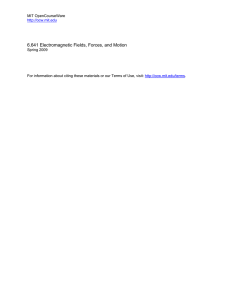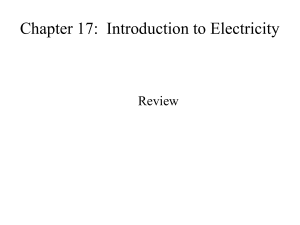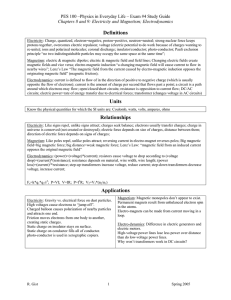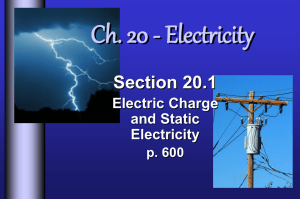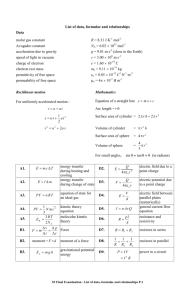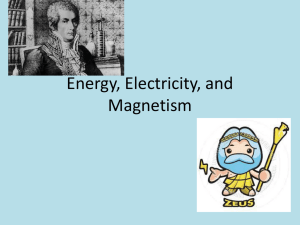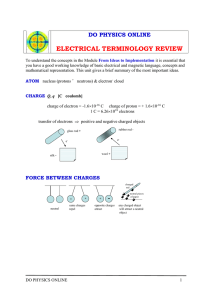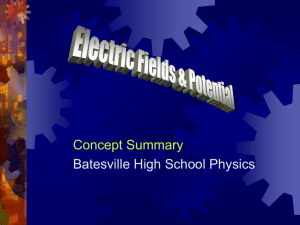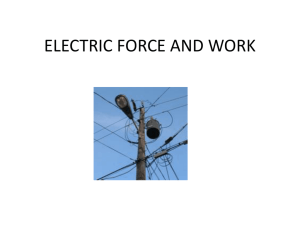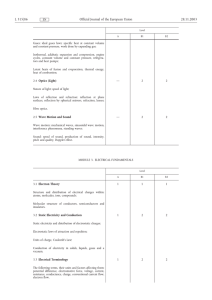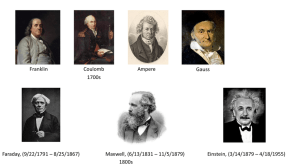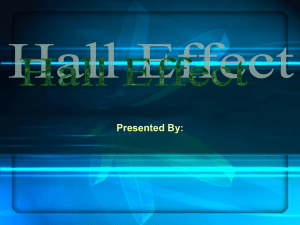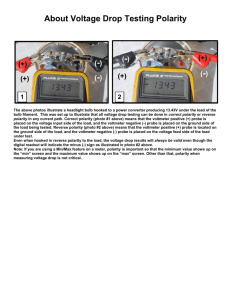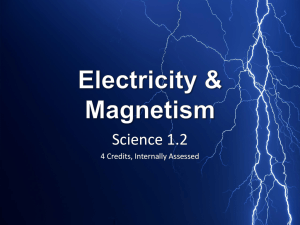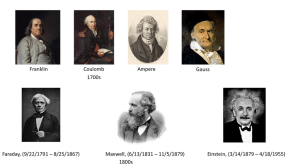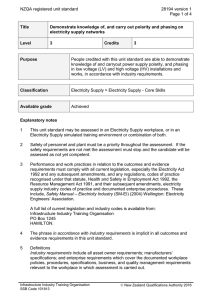Chapter 5 Question Set
advertisement
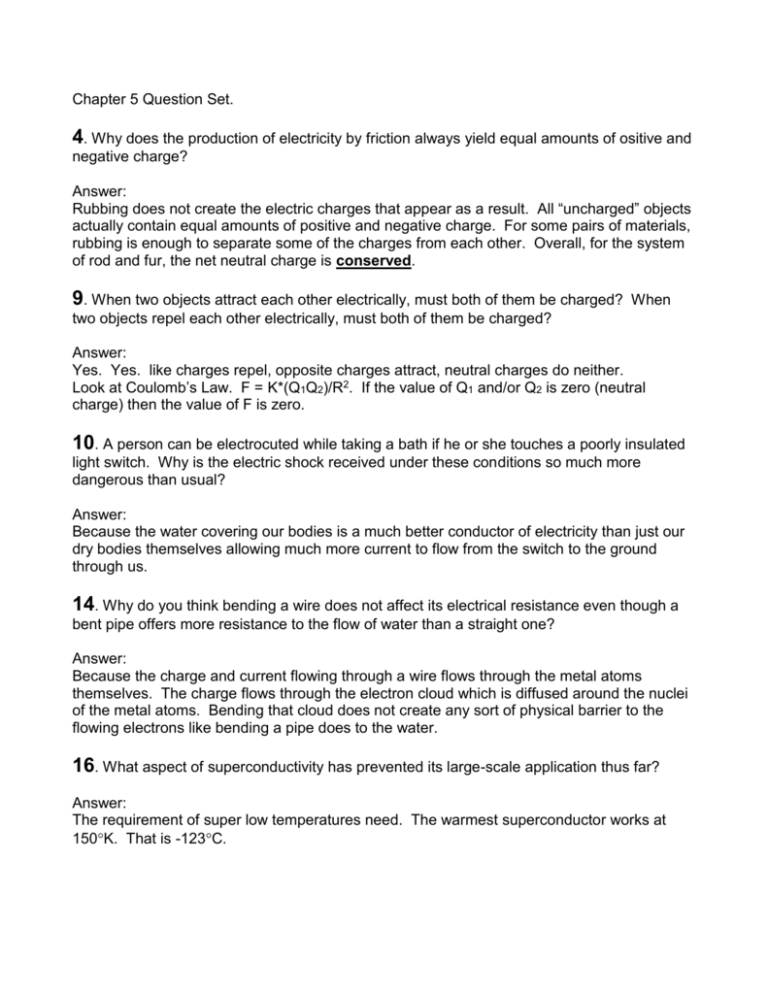
Chapter 5 Question Set. 4. Why does the production of electricity by friction always yield equal amounts of ositive and negative charge? Answer: Rubbing does not create the electric charges that appear as a result. All “uncharged” objects actually contain equal amounts of positive and negative charge. For some pairs of materials, rubbing is enough to separate some of the charges from each other. Overall, for the system of rod and fur, the net neutral charge is conserved. 9. When two objects attract each other electrically, must both of them be charged? When two objects repel each other electrically, must both of them be charged? Answer: Yes. Yes. like charges repel, opposite charges attract, neutral charges do neither. Look at Coulomb’s Law. F = K*(Q1Q2)/R2. If the value of Q1 and/or Q2 is zero (neutral charge) then the value of F is zero. 10. A person can be electrocuted while taking a bath if he or she touches a poorly insulated light switch. Why is the electric shock received under these conditions so much more dangerous than usual? Answer: Because the water covering our bodies is a much better conductor of electricity than just our dry bodies themselves allowing much more current to flow from the switch to the ground through us. 14. Why do you think bending a wire does not affect its electrical resistance even though a bent pipe offers more resistance to the flow of water than a straight one? Answer: Because the charge and current flowing through a wire flows through the metal atoms themselves. The charge flows through the electron cloud which is diffused around the nuclei of the metal atoms. Bending that cloud does not create any sort of physical barrier to the flowing electrons like bending a pipe does to the water. 16. What aspect of superconductivity has prevented its large-scale application thus far? Answer: The requirement of super low temperatures need. The warmest superconductor works at 150K. That is -123C. 18. Heavy users of electric power, such as large electric stoves and clothes dryers, are sometimes designed to operate on 240 V rather than 120 V. What advantage do you think the higher voltage has in these applications? Answer: These items depend on current through an element with specified resistance to generate the heat they need. Since current = voltage/resistance, increasing the voltage allows for an increased resistance for the same amount of current, therefore, more heat generated. also since power equals current X voltage, increased voltage means you can use less current and still generate the same amount of power. We pay for electricity based on the amount of current we use. 19. Why is a piece of iron attracted to either pole of a magnet? Answer: Because the molecules in iron are randomly distributed as far a polarity so they can be influenced by either a north or south magnetic pole. The magnetic polarity will rearrange based on the polarity of the magnet leading to a net attractive force. 24. A current flows west through a power line. Find the direction of the magnetic field above and below the power line; ignore the earth’s magnetic field. Answer: The direction of the magnetic field above and below the power line will be north and south and up and down.
